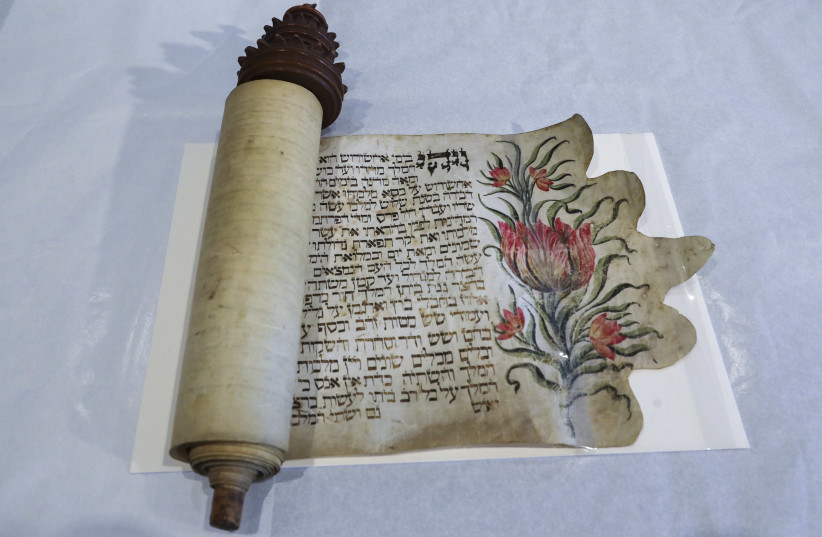Whenever a holiday concludes, we would do well to review it and search deeply for the lessons that it taught us. This is particularly true for Purim, for two reasons.
First, it is – according to the rabbis – the only holiday that will remain for us in messianic days, when all the other Jewish holidays will no longer be relevant. Secondly, the Book of Esther is the only one of the five megillot read in the evening, as well as the following morning. One of the reasons for this is that the events of Purim are so crucial and so complex that only with a second reading can we truly begin to comprehend them.
There are two very different theses being presented to us in the megillah. One is that God is in total, complete control of everything that happens in the universe, particularly as it affects humanity, and especially regarding the ramifications for us, the Almighty’s “firstborn.” As the Purim story unfolds, events transpire seemingly as if by accident, but we know that there is a guiding hand pulling the strings from above.
And so, it is Esther, among all the dames and damsels in the Persian kingdom, who finds favor in Ahasuerus’s eyes and is chosen – in not one, but two beauty pageants! – to be the principal queen in his harem. It is Esther’s relative Mordecai (her husband, according to the Talmud) who happens to become Ahasuerus’s principal adviser and confidante, and whose act of heroism in saving the potentate’s life is ignored until that very moment when it is most needed.
Mordecai’s prominence will inflame Haman’s desire to stage a coup and usurp Ahasuerus; and the villain, in a final irony, will build the very gallows upon which he, and not Mordecai, will be hanged.

All these events conspire together to both save Persian Jewry and ultimately result in the reign of Darius II, who reinstated Cyrus’s permission for the Jews to rebuild the Temple. Could all this have truly occurred by fortuitous accident? Isn’t it strikingly obvious that God was orchestrating all of this, from the trauma we suffered that led us to pray together, to the unity we achieved when we formed our own militia and defeated our enemies?
True, God’s name is strikingly absent from the megillah, but perhaps this is because to mention Him only here and there would be superfluous because He is truly everywhere in the story, from its beginning to its end. And so God, as it were, resides behind the mask, yet is ever-present.
God gives man the tools, but man must use them
THIS IS surely one reading of the story. But we could make a very serious case for declaring that the megillah is a testament not to the power of God but to the ability of humanity to chart its own course. It is we who have to grapple with our circumstances and use our ingenuity, creativity and courage to face adversity – particularly in the ever-dangerous Diaspora – and turn imminent terror into triumph.
Yes, God gives us the necessary tools, but we have to know how and when to use them. We have to pray when the situation calls for it – as Esther passionately prodded us to do – and we have to fight when our backs are to the wall. Mordecai and Esther are active agents, not passive pawns.
In seems clear that the megillah is a synthesis of these two approaches and is yet another prime example of God and man acting as partners, working in tandem to move history along to its ultimate conclusion. It is a scene we have seen repeated so many times before: When Abraham and Isaac “walked together” in the story of the Binding of Isaac; when Moses decided to “turn aside” and encounter God’s presence in the burning bush; when, according to the Midrash, Nachson took a leap of faith and jumped into the Reed Sea, thereby splitting it.
And perhaps this is the gist of Mordecai’s dramatic, plaintive address to Esther as he beseeches her to risk her life – even in violation of halachic law, if indeed she is his wife – and plead before the king for her people: “Who knows if it was not for this reason that you reached this high position?” he tells her. Mordecai acknowledges that the Jewish people invariably will survive, but for this community to be saved, Esther must act, and act now.
The moral of this story is vividly being played out right here, right now. Yes, we have deep belief in God and respect for His power; we certainly could not have achieved the miracles in this century without divine assistance. But at the same time, we are neither bystanders nor onlookers – we are an essential part of the process.
We seized upon the opportunity to renew our national independence, we built the institutions of our country, we fought and bled for our hard-won victories. Purim may mean “lots,” implying that life is capricious and our mortal efforts insignificant; but we know that it is a facade, a “Purim shpiel” that masks the essential truth.
The lasting message of the megillah can be succinctly summed up: Man acts, and God reacts.
The writer is the director of the Jewish Outreach Center of Ra’anana. jocmtv@netvision.net.il
